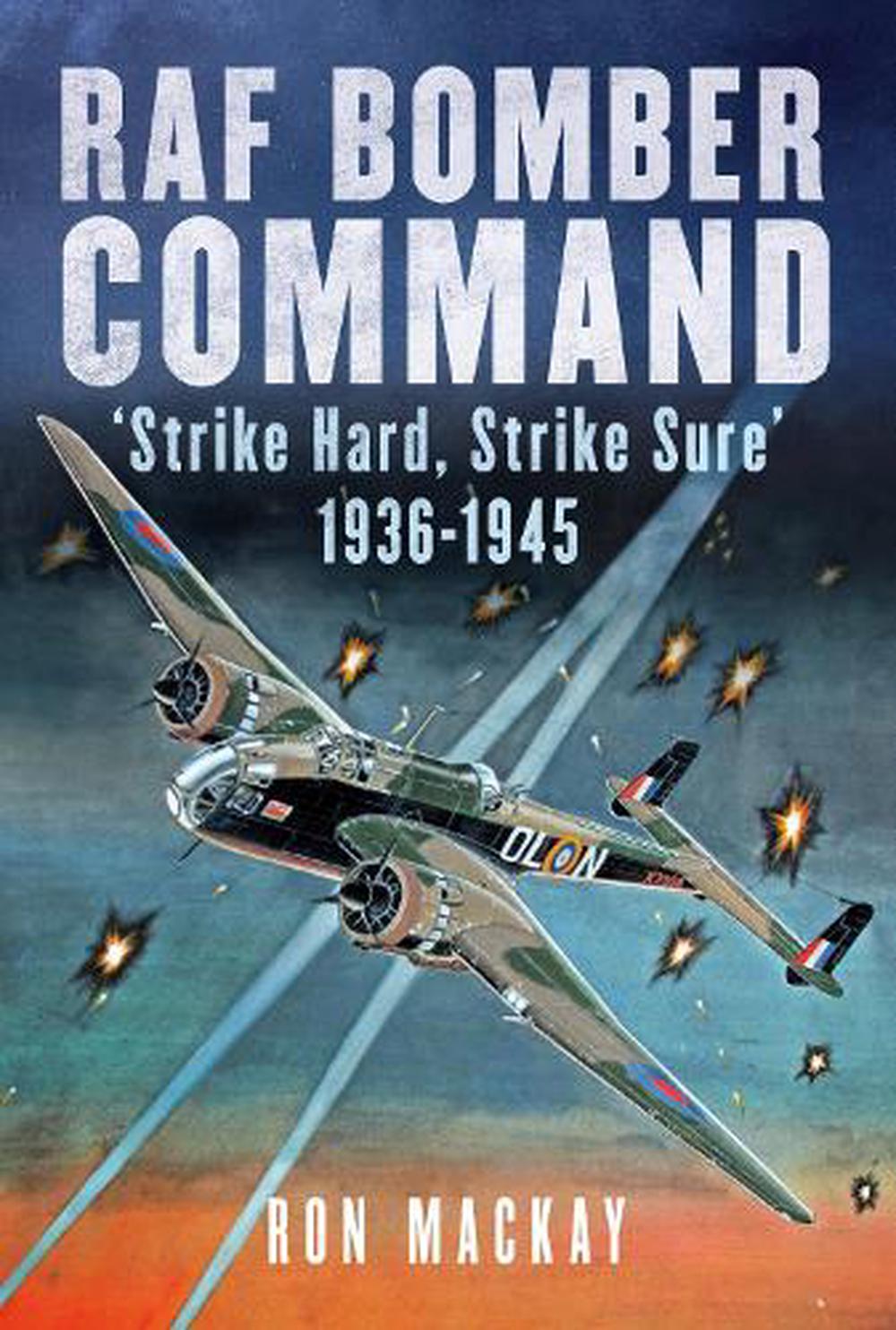
RAF Bomber Command
by Ron Mackay
This book covers Bomber Command from creation in 1936 to 1945. In parallel with Fighter Command's initial defensive fallibility, the means to hammer the Axis industrial base into oblivion was totally lacking and had to be painfully built up to the point where the Force decisively added its weight to bring about an ultimate Allied Victory.
Hardcover
Brand New
Publisher Description
The concept of strategic assault of a Nation's industrial and military base by air was heralded by Britain as far back as the immediate period before the start of WWI. However, stringent post-War economy ensured that the creation of Bomber Command in 1936 witnessed a daunting disparity between the aim of striking at an adversary's ability to sustain itself on the Field of Battle and the means to do so.The initial three years of WWII left the Command very weak in both human and material terms. The navigational means with which to accurately guide the bombers to targets was almost completely lacking during this period, while the enemy defensive network inflicted serious casualty rates. The punishment handed out was accordingly minimal in effect.The resurgence of the Command's fortunes coincided with the appointment of Sir Arthur Harris as C-in-C. The advent of the more efficient Lancaster and Halifax designs ensured a greatly increased bomb tonnage could be delivered. Electronic aids such as 'Gee', 'Oboe' and 'H2'S' ensured the task of locating targets was simplified. So it was that by 1944/45 the Third Reich's industrial base was virtually rendered impotent.
Author Biography
Ron Mackay's involvement with military aviation began during WWII. The local Coastal Command airfield at his birthplace of Wick in Scotland provided a wealth of RAF and USAAF designs with which to stimulate his interest that was subsequently sustained by National Service in the RAF. A working knowledge of German has expanded his field of study into the Luftwaffe. To date, he has published 28 books covering the aforementioned Allied and Axis Air Forces that include several co-authored examples. Further books are currently under process of completion.
Table of Contents
1 The Bomber as a Strategic Concept; 2 Girding up for Battle; 3 From Sublime Optimism to Harsh Reality; 4 'In the Dark-Literally' (May-October 1940); 5 A Staccato Offensive? (October 1940-Mid-1941); 6 Descent into Crisis (July-December 1941); 7 'Area Bombing': The Unavoidable Adaptation; (January 1942-December 1942); 8 'Pathfinders': The Way Ahead; 9 'Terrible Swift Sword': Battle of the Ruhr; 10 'The Specialists': No. 617 Squadron (March 1943-April 1944); 11 Operation Gomorrah: A City Put to the Sword; 12 Peenemünde; 13 'Battle of Berlin': A Major Rebuff?; 14 Berlin Diminuendo to Nuremberg's Ghastly Conclusion; 15 The Transportation Plan: A Necessary Operational Retrenchment?; 16 The Die is Cast (August-December 1944); 17 Irreversible Breach in the Wall: No. 100 Group's Electronic Magic; 18 'The Final Act'; Appendix I: Order of Battle on 15 December 1936; Appendix II: Order of Battle on 26 September 1939; Appendix III: Order of Battle on 4 March 1943; Appendix IV: Order of Battle on 19 April 1945; Bibliography; Index.
Long Description
The concept of strategic assault of a Nation's industrial and military base by air was heralded by Britain as far back as the immediate period before the start of WWI. However, stringent post-War economy ensured that the creation of Bomber Command in 1936 witnessed a daunting disparity between the aim of striking at an adversary's ability to sustain itself on the Field of Battle and the means to do so. The initial three years of WWII left the Command very weak in both human and material terms. The navigational means with which to accurately guide the bombers to targets was almost completely lacking during this period, while the enemy defensive network inflicted serious casualty rates. The punishment handed out was accordingly minimal in effect. The resurgence of the Command's fortunes coincided with the appointment of Sir Arthur Harris as C-in-C. The advent of the more efficient Lancaster and Halifax designs ensured a greatly increased bomb tonnage could be delivered. Electronic aids such as 'Gee', 'Oboe' and 'H2'S' ensured the task of locating targets was simplified. So it was that by 1944/45 the Third Reich's industrial base was virtually rendered impotent.
Details

